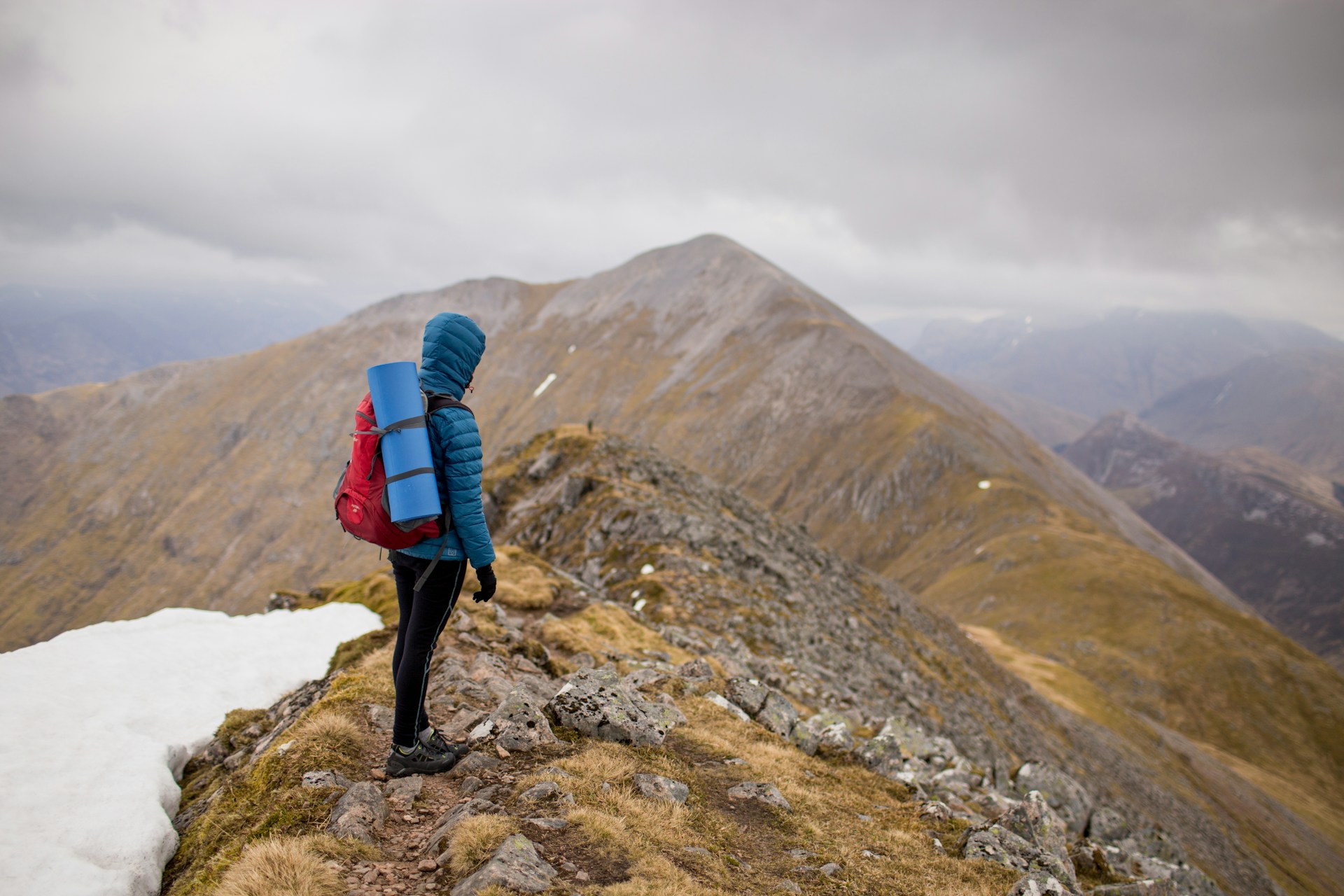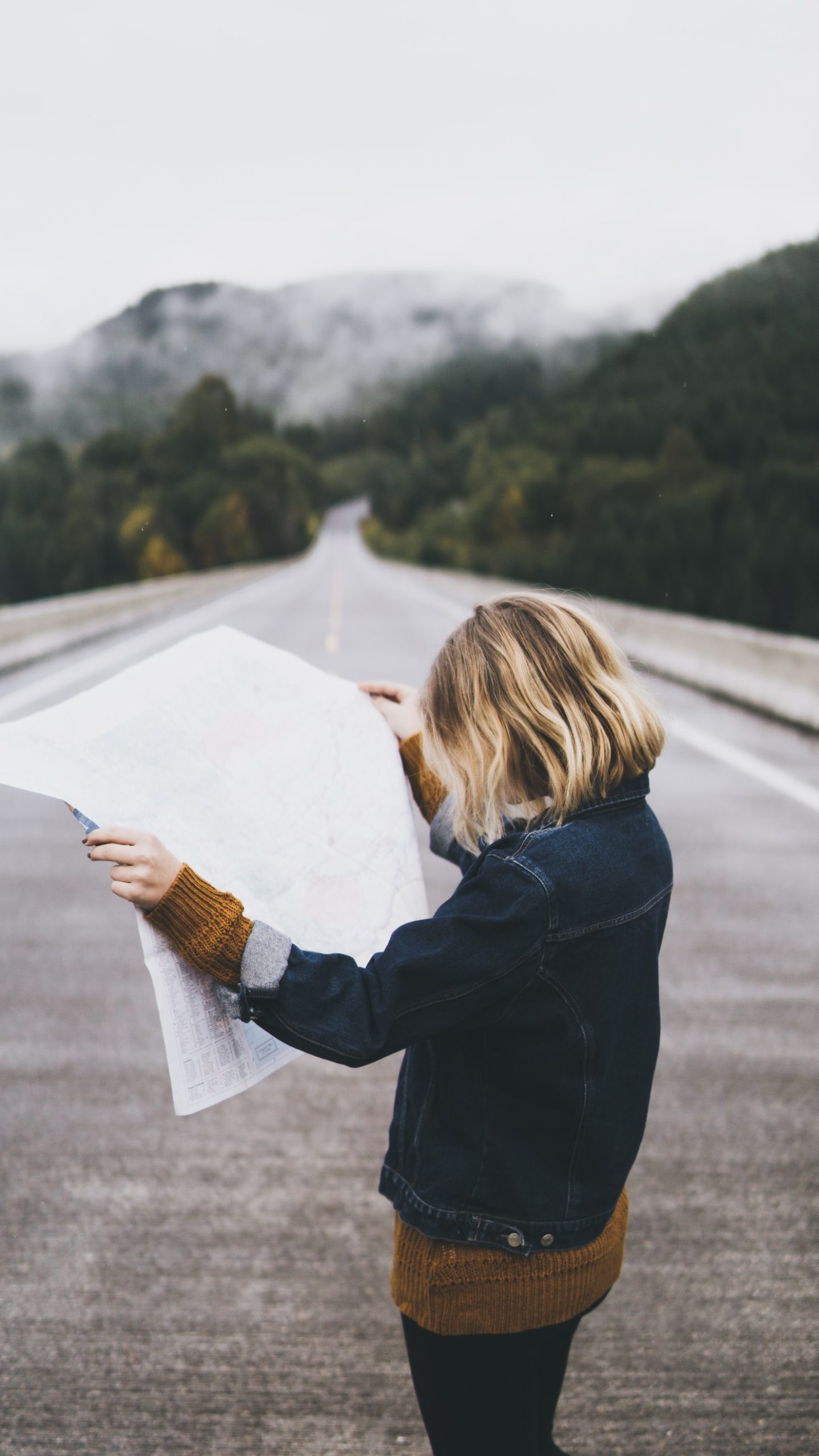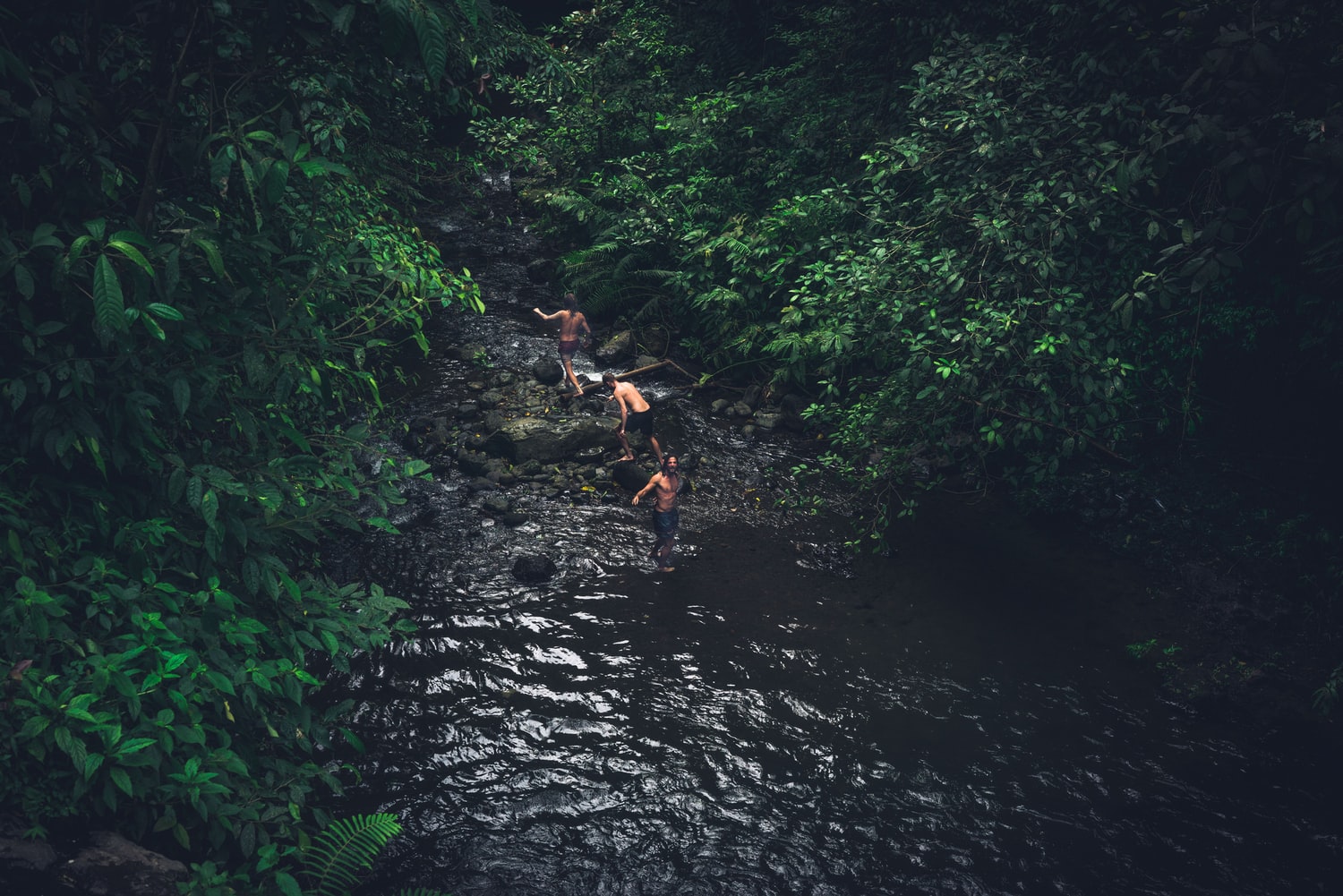We all love to explore the outdoors, but we don’t always think about our environmental impact during our adventures. We all explore for different reasons: to experience nature’s beauty, to see it before it’s “too late,” to escape our normal routines, and to immerse ourselves in the wild.
For many tourists, they travel to popular places because of the hype but also visit because they think the destination will become too popular, too overcrowded, and they won’t be able to when they get older. Therefore, we find masses of people at National Parks. We see the damage done from visitors who may not be aware of environmental stewardship best practices or don’t care.
There are five kinds of visitor actions that can impact nature: careless, unskilled, uninformed, unavoidable, and illegal. Careless actions happen when we don’t really think about what we’re doing, such as picking wildflowers or littering. Unskilled actions are when visitors do something they know they should do but don’t have the right skills such as building a low-impact campfire. Uninformed actions are times when visitors feed wildlife, not knowing the impact it’ll have. Unavoidable actions are when visitors purposefully step off of designated trails. Finally, illegal actions are when there are purposeful violations of the laws or regulations.
When we don’t stick to “Leave No Trace” principles, evidence of our trip is left behind which negatively affects wildlife, trails, the environment, and the next generation of explorers.
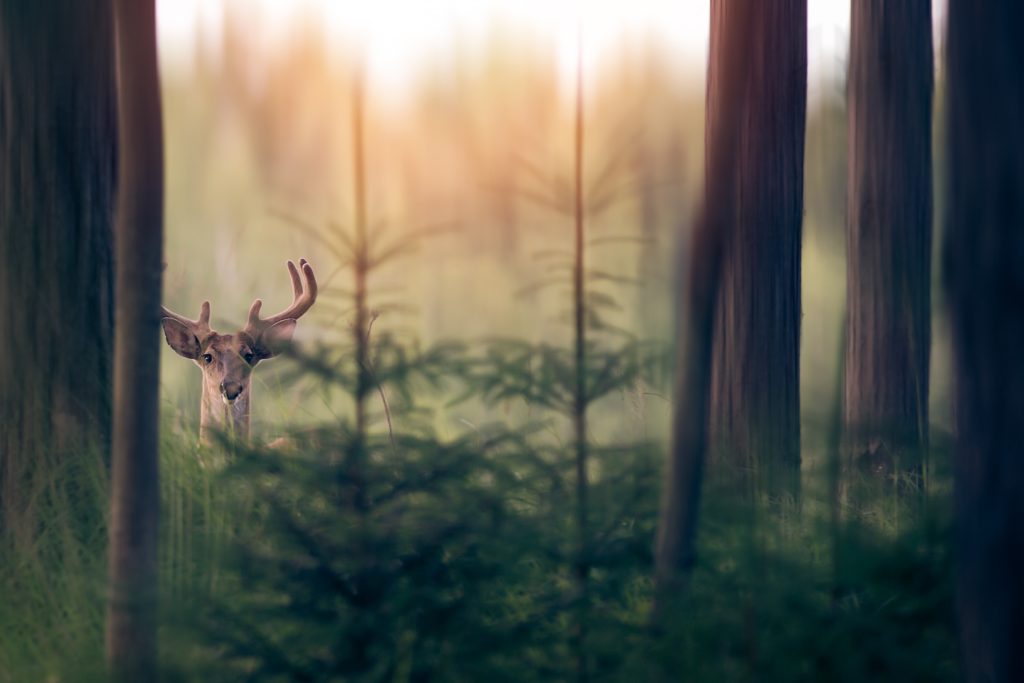
Outdoor Adventure Impact on Wildlife
Whether or not we realize it, even low-impact activities can affect wildlife, such as hiking, cross-country skiing, and bird-watching. The challenge with this is finding a balance between outdoor recreation and adventures and protecting nature through environmental stewardship.
When you have large groups of people congregating in the same area, this can disrupt wildlife and have far-reaching effects. For example, large crowds of people can impact breeding cycles of animals which can reduce the numbers of animals in the area or even lead to extinction.
Additionally, litter or food left by recreationists such as discarded plastic wrappers or six-pack rings and garbage can impact animals and potentially their offspring. Animals can teach their offspring patterns, what to avoid, and what to pursue. When people feed animals, this can lead to increased human interaction. While the squirrel may not cause harm, bears that grow used to human food may come to campsites more often, which might lead to life-threatening situations – both for the bear and human.
Another important factor is human interaction with animals. Recreationists have pet buffalo in Yellowstone National Park. Not only does this impact the animal’s welfare (we need to keep animals wild), it’s irresponsible and dangerous for humans. The man was lucky the buffalo did not attack him and the rest of the crowd that watched.

Outdoor Recreation Impact on Trails
When we visit the same places in masses, places like Machu Picchu experience “over-tourism” and end up having to regulate visitors. They put into place a rule that required visitors to arrive within 60 minutes of their ticketed time and limited exploring the site to four hours.
This goes to show that discovering places “off-the-beaten-path” can help mitigate over-tourism. Overcrowded National Parks impact visitors’ ability to enjoy the scenery and actually “get away.” The peace we seek in nature is totally destroyed when you have groups of tourists fighting over parking spots, yelling at each other, or throwing their trash everywhere. It also reduces the park’s natural resources and degrades the landscape and historic sites.
By visiting places that aren’t Bucket List items, we help displace some impact that hoards of people have on a single place alone. You can also learn just as much (about yourself and the location) by exploring an unpopular – albeit unique – place as you would if you visited a landmark. Also, your pictures will likely have fewer people and selfie sticks in them too.
When you have overcrowding, the problem of trampling increases. Trampling happens when there are too many tourists using the same trail repeatedly without giving it rest. If there are too many people on the trail or visitors are not walking single file, tourists may wander off the trail. This widens trails and can kill off vegetation that runs alongside. This can eventually can cause loss of biodiversity.

How This Impacts the Environment
Trampling can have a rippling effect such as destroying soil which decreases “air and water permeability,” increases run-off, and accelerates erosion.
Soil supports a variety of life.
The five components of soil are: mineral matter, air, water, dead organic material, and living organisms. The surface layer of soil consists mostly of organic matter and is critical to the health of the soil, biodiversity, and plant growth. When we trample soil (that shouldn’t be), plant roots have a harder time penetrating the soil. If plants can’t root themselves in the soil, this can lead to a loss of biodiversity and nutrient cycling.
When we damage shrubs and trees (create clearings or veering off-path), vegetation in areas can become barren. All of this leads to a reduced reproduction of plant life. And breathing fresh pine trees is one of the perks of exploring the wild. Without plant life, we get less fresh pine smell.
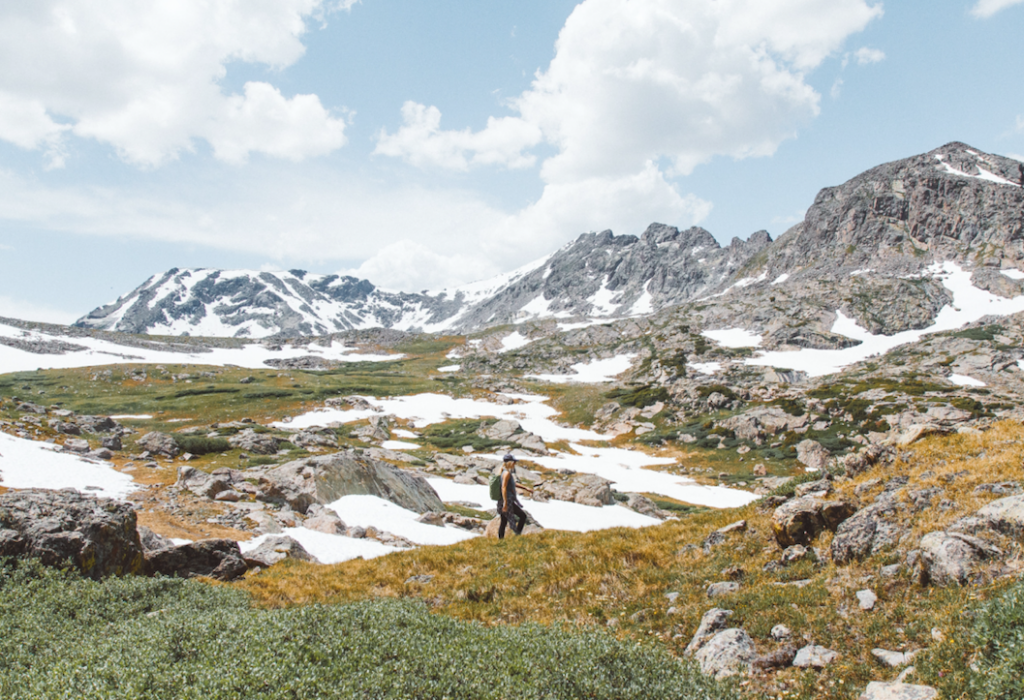
What We Can do to Decrease Our Environmental Impact
The point of this isn’t to be alarmist or scare you off from exploring and adventuring outdoors. We think there’s a place for us to enjoy nature while also being conscientious of our impact and adventuring responsibly. By educating ourselves, we’ll be able to do both. Here are ways to practice environmental stewardship on outdoor adventures:
Plan ahead
It’s said, “An ounce of prevention is worth a pound of cure.” When we think about how we can prevent negatively impacting nature, we can best prepare to enjoy it.
Preserve the outdoors by planning ahead and preparing yourself. Review park regulations so you know what they allow and prohibit. For example, they ban campfires in some wilderness areas. It’s also important to know if there are restoration periods or closures.
By checking the weather for rain, snow, or shine, you can avoid wet and soggy trails by waiting for storms to pass and trails to dry out. Hiking through muddy trails can cause irreparable damage to trails. It also helps to prepare for storms. Be prepared so you can have more fun.
Plan Your Timing
Research the most popular times to visit the area and schedule outside of that. When user impact is already at a higher level, you can do your part by visiting at a lower visitor-level time.
By going during off-peak times, there’s less impact on the trails, and gives the trails a little rest before the next massive wave of tourists.
You can also plan your timing around wildlife as some animals can be more vulnerable during different seasons and times throughout the day. For example, your winter visits may stress animals further. Consider the time of day when you’re out exploring as some animals are nocturnal while others drink from water sources during the day.
Stay on the trail
As we mentioned earlier, trampling destroys soil and biodiversity. Prevent this from happening by staying on established trails. This means do not create new trails and do not take shortcuts at trail switchbacks.
By veering off the trail, you can erode and widen paths which will affect the soil, plant life, and vegetation nearby.
Further, respect trail closures. Parks close trails to allow for restoration and to minimize impacts on wildlife and soil. When you disregard trail closures and walk on the paths, it does the same damage as it would when veering off established paths.
Keep animals wild
When we’re exploring the outdoors, remember it’s their home. Just like we wouldn’t appreciate someone trampling through our living room, respect the wildlife when we’re visiting.
Keep animals wild by staying a distance and not feeding them. Stay far enough away that you need binoculars to see them. If you notice an animal changing their behavior, it’s likely you’re too close and need to back away.
Avoid leaving food for animals or directly feeding it to them because it’s not nutritional and it could be dangerous for you and the animal. They can find food in their natural habitat, so there’s no need to feed them nuts or bread. As we said earlier, feeding animals increases human interaction and can lead to injuries or death, both for you and the animal.
If bears get used to eating human food in a particular area, say a campsite, they’ll return. If the bear poses a threat to visitors, the bear will likely be killed. If you’re near a site and come across a bear, it may attack. Respecting wildlife lets them stay wild and keeps you safe.
Be considerate of others
When you’re in nature, remember why you were visiting – likely to get away from people. This means keeping your noise level down, parking in established areas, following the rules and regulations of the park, and being respectful. We’re all there for the same reason, which is to enjoy nature.
Tread Lightly
A fantastic organization is Tread Lightly. They “promote outdoor ethics to heighten individuals’ sense of good stewardship.” They help us balance our desire to get outdoors with the responsibility of protecting nature. They have tips for tons of outdoor activities and how to practice good environmental stewardship. Here are just a few:
- In areas without trails, spread out in open country. Spreading out, rather than following each other’s footsteps, disperses impact and avoids creating a new trail. If possible, travel on hardened surfaces such as gravel, slick rock or in sand washes.
- Stay on the trail even if it is rough and muddy.
- Educate yourself prior to a trip by obtaining travel maps and regulations from public agencies, planning for your trip, taking recreation skills classes, and knowing how to operate your equipment safely.
- Other sensitive habitats to avoid include cryptobiotic soils of the desert, tundra, and seasonal nesting or breeding areas.
- In areas without toilets, use a portable waste bag if possible and pack out your waste, otherwise, it’s necessary to bury your waste. Human waste should be disposed of in a shallow hole (6”-8” deep) at least 200 feet from water sources, campsites or trails. Cover and disguise the hole with natural materials. It is recommended to pack out your toilet paper. High-use areas may have other restrictions so check with a land manager.
To find tips on specific activities you like to do, visit their recreation tips page.
Give back
What about giving back to the outdoors? Trail maintenance is a great way to spend a day outside and keep our trails preserved. There are tons of ways to volunteer outside and give back to nature. Volunteers for Outdoor Colorado lists: gardening, planting, wildfire and flood restoration, invasive weed removal, ecological and habitat restoration, forestry management, and preservation of historic structures.
Search online for volunteering in your area.
Leave no trace
The most well-known environmental stewardship is Leave No Trace. Companies and organizations have adopted their principles to protect the environment and do as little harm as possible. Leave No Trace provides seven principles for outdoor adventures and recreation. These principles help minimize our impact on wildlife and the environment. The seven principles are:
- Plan Ahead and Prepare
- Travel and Camp on Durable Surfaces
- Dispose of Waste Properly
- Leave What You Find
- Minimize Campfire Impacts
- Respect Wildlife
- Be Considerate of Other Visitors
For detailed explanations for the principles and tips to practice environmental stewardship, visit Leave No Trace. Their guiding principles are just the start to minimizing our environmental impact on outdoor adventures.
Outdoor adventures and recreation give us that pep in our step after long weeks in the office underneath fluorescent lights. As David Thoreau said, “I went to the woods because I wished to live deliberately.” We travel into the wild to get away from swarms of people and to experience life.
Planning your next adventure? Here are some tips to help you with that.



